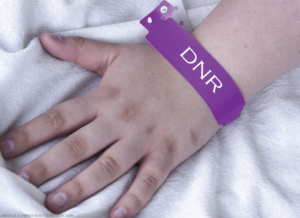 My long-standing patient with CRST syndrome (i.e., calcinosis cutis, Raynaud’s phenomenon, sclerodactyly and telangiectasia) had been losing ground over the past 18 months. BL was 54 and had developed restrictive pulmonary disease without radiographic pulmonary infiltrates. Her mean right heart pressures were moderately elevated by ultrasonography.
My long-standing patient with CRST syndrome (i.e., calcinosis cutis, Raynaud’s phenomenon, sclerodactyly and telangiectasia) had been losing ground over the past 18 months. BL was 54 and had developed restrictive pulmonary disease without radiographic pulmonary infiltrates. Her mean right heart pressures were moderately elevated by ultrasonography.
But the greatest impact on her quality of life and prognosis stemmed from her gut function. BL had swallowing difficulties, along with severely impaired peristalsis throughout the gastrointestinal tract, from the pharynx and esophagus to the large bowel. She had been losing weight, and we had talked about a feeding tube, although that wouldn’t help her small bowel hypomotility. Her natural upbeat and exuberant nature had diminished, although she was still capable of genuine smiles during her office visits.
Her loving and supportive husband and daughter would always accompany her to the clinic. I had followed her now for approximately eight years, seeing her five or six times a year. I believed that I knew and understood her and that she and her family knew me. I liked and admired BL. (Yes, we are human, and it follows that we do not develop the same quality of human interactions with each and every human being we see and treat. Is it possible that these positive emotions could affect what we would soon experience together? Should knowing a patient well determine the correctness of any medical approach? More on this later.)
In the past several months, we had had frank discussions about her wishes for end of life. She recognized there were no readily available or easy solutions to the devastating disease that was affecting so many different organ systems. Recovery was highly unlikely, and she knew it. BL told me, in the presence of her family, that she would not want to be on a respirator with a feeding tube. If faced with intubation, she would not wish to have this heroic procedure performed. We agreed that her medical chart would have a do not resuscitate (DNR) order on file with a do not intubate designation.
Crisis
Within a year of this conversation, I was called at my office in an adjoining building by a house officer who informed me that BL, who had been hospitalized for further gastrointestinal studies, was experiencing what appeared to be a terminal event.
I immediately raced to her hospital room. I found a patient gasping for air while pointing to her throat. Her distraught husband and daughter were at the bedside. They looked at me imploringly. Was this the end? Was she going to die like this?
I quickly glanced around and saw her bedside lunch tray containing a partially consumed chicken dish. BL had a panicked look. Her eyes were wide, her brow furrowed and her mouth stretched in what looked like a ghastly, stifled scream. She just needed to breathe!
I placed a stethoscope over her airway and heard a great deal of inspiratory turbulence. I got behind the chair where she was seated, pulled her up and performed a Heimlich maneuver. Nothing came out of the airway and nothing changed. I asked the senior medical resident, who had just contacted me, to call anesthesia. She hesitated.
It was easy to read the resident’s emotions. This patient was a DNR! We exchanged meaningful looks and held each others’ gaze for what seemed like an eternity; probably only seconds. A resolute look indicated she would call anesthesia. Now!
The anesthesiologist arrived quickly. BL was moved to the bed and a laryngoscope was placed in her pharynx. A forceps yielded a large, solid piece of chicken.
BL immediately resumed breathing normally. She experienced a glorious and immediately apparent sense of relief. She and her family were visibly joyful. The gratitude was unmistakable. Her husband and daughter also started to breathe again. There were visible tears of relief all around.
However, the senior medical resident, a woman I had interacted with favorably in other clinical scenarios, had now assumed the mantle of the distraught person in the hospital room. I could see by the look on her face that she had just witnessed a faulty outcome because of a flawed approach executed before her eyes by a medical attending. Why did we just save the life of a patient who had a terminal, incurable disease who was a DNR!?
After spending some time with my patient I asked the resident to accompany me to a quiet area on the hospital floor.
A Teaching Moment
We had both witnessed the immediate resolution and relief of an event that would indeed, if allowed to proceed to its natural conclusion, have hastened the final resolution of BL’s other very significant health burdens. The resident felt what I did was inappropriate. She was appalled that the natural course of events was not allowed to carry the patient forward to the expected outcome from her acute aspiration. She believed her medical duty was to not interfere.
What if she died? Wasn’t she DNR?

Dr. Kremer
With some effort, I was able to harness my better angels and treat our interaction as a teaching moment.
I explained that a DNR status is meant to apply to resuscitation in the setting of the natural course of a terminal illness. It was not meant as a directive to withhold compassionate, appropriate medical attention in other situations that might arise in the course of a patient’s pre-terminal life. What if BL had fallen in the bathroom, struck her head and was bleeding? Would we withhold first aid and appropriate medical attention? We went through other scenarios in which a patient with a terminal illness still deserved compassionate attention for relief of symptoms, even while inhabiting DNR status.
I was struck by the confusion on the part of a good house officer about how to proceed in the situation described. It became apparent to me that her belief was that DNR meant the right thing to do was to not provide medical attention and succor. And this was to be the case even if the acute problem was reversible, and/or only tangentially related to the underlying condition for which the DNR designation had been agreed to by the patient and her family.
Expanded Learning Opportunity
After BL’s experience, we arranged for a house staff conference. I wanted to discuss whether it is appropriate to offer care for acute and reversible events in a patient with a DNR order. There was a good deal of shifting in chairs, accompanied by many troubled expressions on the faces of the medical residents in attendance. Some residents were clearly flummoxed by the idea of helping a DNR patient survive—even if an acute medical challenge was readily reversible. It was just so much easier to equate DNR with “stop doing everything.”
The house staff ’s non-verbal communications appeared to indicate, “Why do you need to make our lives more complex? I thought I knew what to do with these patients!”
Are we respecting the rules by rendering care in these situations?
Patient’s Perspective
BL passed away at home several months after this hospital event. Her nutritional status had deteriorated further, and toward the end she refused both feedings and parenteral nutrition. I connected with the family at the time of their loss. They once again thanked me for saving a beloved wife and mother from what would have been an agonizingly frightful and unanticipated final moments of life because of an aspiration at lunch. They again related how grateful BL was that she did not pass from this world in that manner.
They also knew BL had a DNR order, but were mystified and concerned about what they had witnessed in her hospital room at the time of the aspiration. They told me how grateful BL and they were for the end of the acute horror they all experienced that day. But they also related that they just couldn’t understand why the medical resident was unable to help prior to the final resolution of the problem.
We fondly recalled together the joyful person we knew before her disease closed in on her.
Beyond One
I have asked myself, when I have relived this experience, if my response would have been as rapid if I had not known and liked the patient and her family. What if this was a person I was seeing for the first time? Would the course of events have rapidly played out in the same manner as for BL? Would I have been able to recognize a reversible situation and respond appropriately even for a patient I did not know? Does knowing a patient well affect the manner in which we interpret medical or legal rules in challenging circumstances?
We all have what can at times be a somewhat tenuous connection with the core values of caring, compassion and empathy. What if I were a DNR? Would I be grateful if someone saved me from an agonizing death from aspiration? How can this be wrong? Particularly at a time of acute stress and confusion about the rules regarding when it is right to have this instinct guide responses in the setting of conflicting rules and legal circumstances, can being confident in compassion for a complete stranger provide the needed personal agency to do the right thing?
It is inevitable that we consider how these lessons might apply to other medical situations. We are not gynecologists who now must deal with decisions regarding termination of pregnancy (thankfully). What should they do when a woman seeks to terminate a pregnancy because of a set of overwhelmingly negative personal or medical circumstances? What if this person was indeed a stranger and we were hearing their story for the very first time? Would it make a difference, as it might have for the medical resident who misinterpreted the meaning of a DNR order? Would a familiar feeling of default compassion trigger, and then inform, an appropriate medical approach?
That is, where should caring end and rules and laws take over? Is it possible to legally render compassion unacceptable?
Joel M. Kremer, MD, MACR, has engaged in clinical research for the past four decades. He currently leads a not-for-profit research organization, the Corrona Research Foundation.

